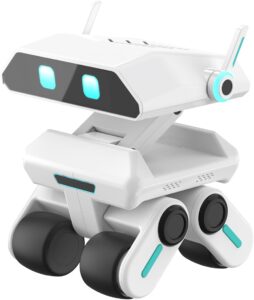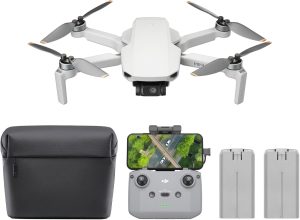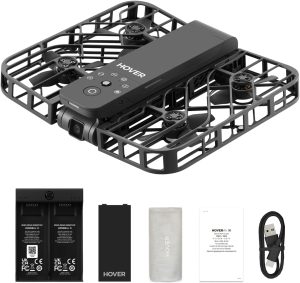Exploring the New Horizons of AI NVIDIA’s Vision

NVIDIA’s CEO recently delivered a talk at an AI Summit in India, covering intriguing AI advancements. While many discussions focus on AI’s present, this one offered a glimpse into the future. Topics included AI inference time, workplace AI agents, and the revolutionary potential of humanoid robots. Dive into these transformative ideas without further ado.
This summary captures key insights from the talk. As AI progresses, its relevance grows across industries. Understand how AI models evolve beyond quick replies to thoughtful reasoning. Discover how AI agents could redefine workplaces by 2025. Lastly, envision a world where physical AI and humanoid robots become part of daily life.
Unpacking AI Inference Time
AI is evolving how it processes information. Imagine two systems: one responds instantly, the other thinks deeply before answering. This enhanced reasoning can improve response quality. It’s like choosing between a knee-jerk reaction and a well-thought-out plan. Both have their place, but the latter can be more insightful, enhancing AI’s capability.
AI Agents and the Future Workplace
By 2025, AI agents may revolutionize the workplace. These autonomous systems offer a range of services, both free and paid. They’re not just simple bots; they perform complex tasks. From customer service to chip design, AI agents could enhance productivity by acting as digital colleagues.
Think of onboarding an AI as hiring a new employee. Training, fine-tuning, and guardrails ensure they align with company goals. Whether in marketing or accounting, these agents can maximize efficiency. NVIDIA provides platforms like AI Enterprise and Omniverse to integrate these systems seamlessly into businesses.
Physical AI and Humanoid Robots
NVIDIA’s vision includes AI that interacts with the physical world. The goal is to build robots that can navigate real environments. Imagine robots building cars or managing warehouses.
To create such robots, AI models need training in virtual worlds that mimic reality. NVIDIA has developed technology like DGX for model training and Omniverse as a virtual playground. Omniverse allows robots to practice their skills before entering the physical world. Once trained, these robots can transform industries.
Picture factories run by AI, where robots independently monitor operations. It’s not just future talk; it’s happening now as NVIDIA collaborates globally. With advanced AI, industries could see a dramatic shift in how physical tasks are completed.
Digital Twins and AI Simulation
Simulation plays a vital role in AI’s evolution. Digital twins provide a virtual test environment, reducing real-world risks. They help developers refine AI models efficiently.
In NVIDIA’s Omniverse, AI models simulate tasks, such as industrial operations. This environment enables safe, cost-effective testing before deploying AI in real scenarios. Enterprises leverage this technology to minimize errors and optimize efficiency.
Omniverse’s dynamic testing tools allow companies to explore various AI applications. From learning to executing tasks, AI can adapt seamlessly in its digital twin before transferring to the physical realm.
The Era of Software 2.0
The shift from software 1.0 to 2.0 marks AI’s integration into traditional industries. Machine learning on GPUs has unleashed new possibilities, leading to generative AI models.
These models now automate processes worth trillions, affecting sectors from manufacturing to information technology. As industries embrace AI, they redefine how work is done.
Imagine AI assisting in decision-making, managing resources, and solving complex problems quickly. This leap can enhance productivity and innovation, reshaping business landscapes across the globe.
AI-Driven Industrial Transformation
AI’s role in industrial sectors is expanding rapidly. Physical AI merges digital insights with real-world actions, transforming operations.
Robotic technologies, such as self-driving cars and industrial manipulators, showcase AI’s potential. These smart systems can perform tasks previously impossible for machines alone.
With robots thinking and acting on their own, industries save time and resources. The integration of AI assures more accuracy and efficiency in daily operations, paving the way for smarter industrial setups globally.
NVIDIA’s Global Contributions
NVIDIA plays a key role in the AI revolution, partnering globally to enhance AI capabilities.
By providing cutting-edge tools, NVIDIA supports the creation of AI systems that meet diverse industry needs. From robotics to simulation, their contributions are vast.
Their collaborations aim to standardize AI adoption, allowing seamless transitions in various fields. NVIDIA’s influence helps shape the AI landscape, impacting both local and international markets.
Vision Into Reality
As AI evolves, it continues to blur lines between virtual and real worlds.
NVIDIA envisions a future where AI seamlessly integrates into everyday life, executing both mundane and sophisticated tasks. This vision promises efficiency at unprecedented levels.
AI isn’t just a technological marvel; it’s an ally. Industries and individuals alike stand to benefit from its advancement. The journey from concept to reality is underway, unlocking a new era of innovation.
AI’s future points to unparalleled innovation, from smart agents to interactive robots. These advancements promise to reshape industries globally. As AI grows, so does its potential to improve daily life across varied sectors.








